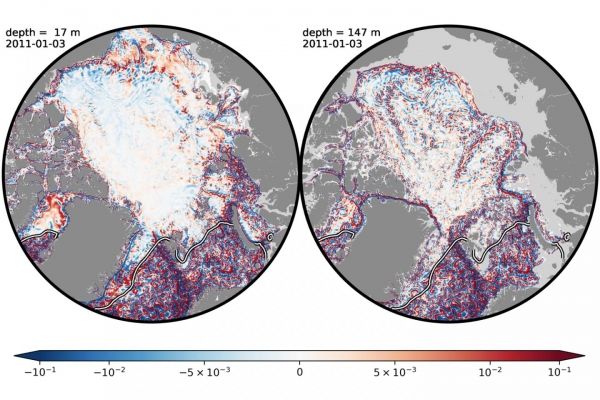Eddies are often seen as the weather of the ocean. Like large-scale circulations in the atmosphere, eddies swirl through the ocean as slow-moving sea cyclones, sweeping up nutrients and heat, and transporting them around the world.
In most oceans, eddies are observed at every depth and are stronger at the surface. But since the 1970s, researchers have observed a peculiar pattern in the Arctic: In the summer, Arctic eddies resemble their counterparts in other oceans, popping up throughout the water column. However, with the return of winter ice, Arctic waters go quiet, and eddies are nowhere to be found in the first 50 meters beneath the ice. Meanwhile, deeper layers continue to stir up eddies, unaffected by the abrupt change in shallower waters.
This seasonal turn in Arctic eddy activity has puzzled scientists for decades. Now an MIT team has an explanation. In a paper published today in the Journal of Physical Oceanography, the researchers show that the main ingredients for driving eddy behavior in the Arctic are ice friction and ocean stratification.
Read more at: Massachusetts Institute of Technology
This image shows the activity of eddies simulated in the Arctic Ocean. The left panel shows seasonal changes in eddy activity at the surface of the ocean, compared to the right panel, where eddy behavior is unaffected by the seasons, and remains the same at deeper levels of the ocean. (Photo Credit: Gianluca Meneghello)


